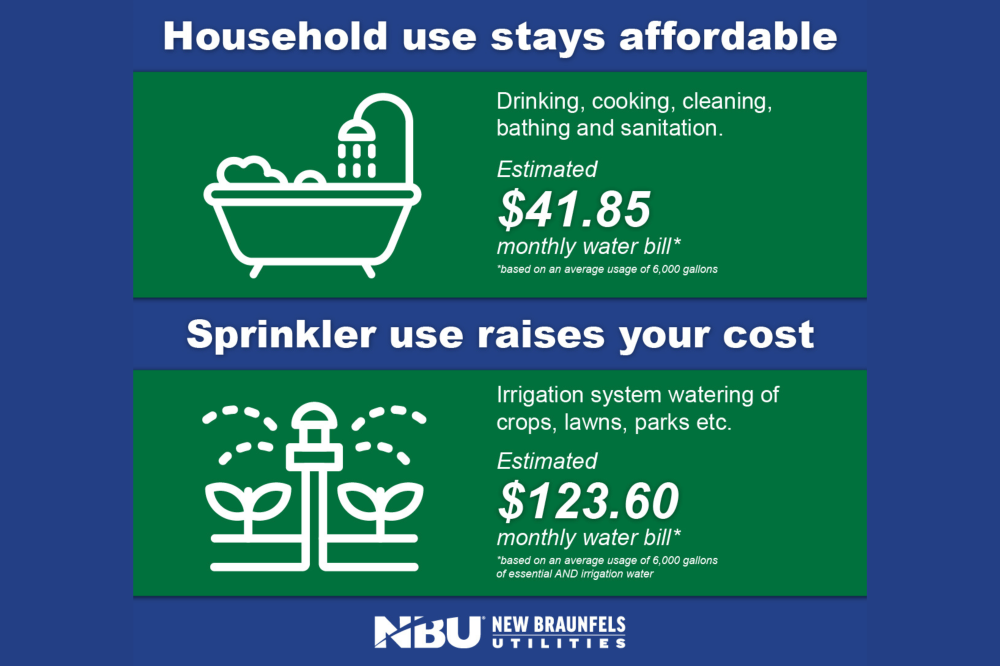Historically, the city relied almost entirely on the Edwards Aquifer, a groundwater source critical to the region. However, for the aquifer to recharge effectively, rain must fall in specific areas known as recharge zones.
Thanks to careful planning and diversification, New Braunfels now draws water from multiple sources. This makes the community more resilient during droughts and population growth.
“We’re actually using less local groundwater than we did back in the ’80s and ’90s, when the population was roughly a third of what it is today,” CEO Ryan Kelso said.
Here’s a look at NBU’s current water portfolio:
Edwards Aquifer: traditional groundwater source still in use
Trinity Aquifer: groundwater
Guadalupe River: surface water
Canyon Reservoir: stored water
Guadalupe-Blanco River Authority Project: imported water
Alliance Regional Water Authority Project: imported water
City of Seguin: purchased water
Green Valley SUD: small quantity of purchased water
NBU conducts a comprehensive Water Resource Plan every five years to ensure these sources remain sufficient. The plan evaluates current supplies, forecasts future demand and identifies new supply options.
“We just wrapped up our most recent update in 2025, and the results were really positive,” Kelso said. “It showed that our water resource portfolio is adequate to serve the community’s growth out into the 2070 decade and beyond.”
What can the community do to help?
Even with robust planning, water management remains vital. Outdoor watering alone accounts for roughly half of New Braunfels’ water use, making responsible practices a major factor in protecting resources.
“Even though we do have plenty of water and NBU has strategically planned for future generations, … every drop counts,” Kelso said. “Every drop that’s not consumed could ultimately come out of the springs. The same can be said about the Canyon Reservoir and the Guadalupe River and its health.”

Small changes can make a big difference. Residents can adjust irrigation timers, turn off faucets while brushing teeth, water trees and foundations responsibly, and monitor indoor water use.
NBU also offers a free home assessment to help households identify water waste.
“We have a conservation team that will come out and do … home assessments for free,” Kelso said. “We really want to come alongside our customers and help them improve their water use habits.”

To further encourage water-wise practices, NBU offers rebates for drought-tolerant landscaping and irrigation zone removal. These programs make it easy for residents to reduce water use while lowering bills.
What’s next?
NBU is currently reviewing its Drought Contingency Plan, which guides how and when residents can water during dry conditions. The updates process is ongoing, and NBU is working closely with the Community Advisory Panel, or CAP, to gather feedback and ensure the plan reflects both community values and the realities of New Braunfels’ water supply. The goal is to develop a plan that balances flexibility and stewardship, helping customers manage water use responsibly while preserving long-term supply. NBU will share additional details about proposed updates as the process moves to the Board of Trustees and City Council for consideration.
By combining thoughtful water usage, strategic planning and community education, New Braunfels is securing water for generations to come.
Take action today. Click here to schedule a free home assessment, or click here to learn about rebates and discover ways to make every drop count.
The above story was produced by Multi-Platform Journalist Sydney Heller with Community Impact’s Storytelling team with information solely provided by the local business as part of their “sponsored content” purchase through our advertising team.
Great Job Akhil Sakhineti & the Team @ Edwards Aquifer Authority for sharing this story.




